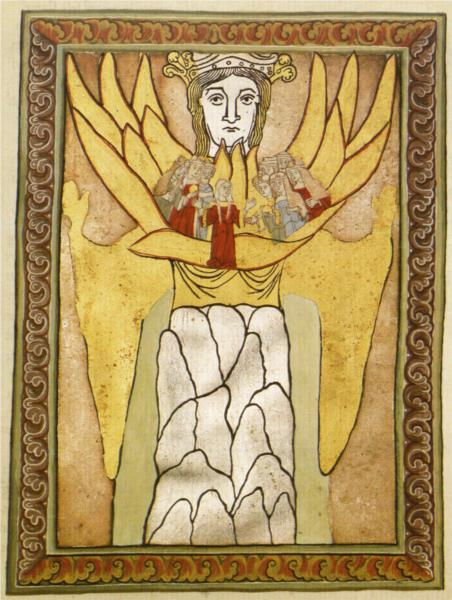
Romanesque Art
Art movement
Romanesque art is the art of Europe from approximately 1000 AD to the rise of the Gothic style in the 13th century, or later, depending on region. The preceding period is known as the Pre-Romanesque period. The term was invented by 19th-century art historians, especially for Romanesque architecture, which retained many basic features of Roman architectural style – most notably round-headed arches, but also barrel vaults, apses, and acanthus-leaf decoration – but had also developed many very different characteristics. In Southern France, Spain and Italy there was an architectural continuity with the Late Antique, but the Romanesque style was the first style to spread across the whole of Catholic Europe, from Sicily to Scandinavia. Romanesque art was also greatly influenced by Byzantine art, especially in painting, and by the anti-classical energy of the decoration of the Insular art of the British Isles. From these elements was forged a highly innovative and coherent style.
Outside Romanesque architecture, the art of the period was characterised by a very vigorous style in both sculpture and painting. The latter continued to follow essentially Byzantine iconographic models for the most common subjects in churches, which remained Christ in Majesty, the Last Judgement and scenes from the Life of Christ. In illuminated manuscripts, for which the most lavishly decorated manuscripts of the period were mostly bibles or psalters, more originality is seen, as new scenes needed to be depicted. The same applied to the capitals of columns, never more exciting than in this period, when they were often carved with complete scenes with several figures. The large wooden crucifix was a German innovation at the very start of the period, as were free-standing statues of the enthroned Madonna, but the high relief was above all the sculptural mode of the period.
Colours, which can be seen as bright in the 21st century only in stained glass and well-preserved manuscripts, tended to be very striking, and mostly primary. Stained glass became widely used, although survivals are sadly few. In an invention of the period, the tympanums of important church portals were carved with monumental schemes, often again Christ in Majesty or the Last Judgement, but treated with more freedom than painted versions, as there were no equivalent Byzantine models.
Compositions usually had little depth, and needed to be flexible to be squeezed into the shapes of historiated initials, column capitals, and church tympanums; the tension between a tightly enclosing frame, from which the composition sometimes escapes, is a recurrent theme in Romanesque art. Figures still often varied in size in relation to their importance, and landscape backgrounds, if attempted at all, were closer to abstract decorations than realism - as in the trees in the "Morgan Leaf". Portraiture hardly existed.
During this period Europe grew steadily more prosperous, and art of the highest quality was no longer confined, as it largely was in the Carolingian and Ottonian periods, to the royal court and a small circle of monasteries. Monasteries continued to be extremely important, especially those of the expansionist new orders of the period, the Cistercian, Cluniac, and Carthusian, which spread across Europe. But city churches, those on pilgrimage routes, and many churches in small towns and villages were elaborately decorated to a very high standard - these are often the structures to have survived, when cathedrals and city churches have been rebuilt. No Romanesque royal palace has really survived.
This is a part of the Wikipedia article used under the Creative Commons Attribution-Sharealike 3.0 Unported License (CC-BY-SA). The full text of the article is here →
Wikipedia: https://en.wikipedia.org/wiki/Romanesque_art